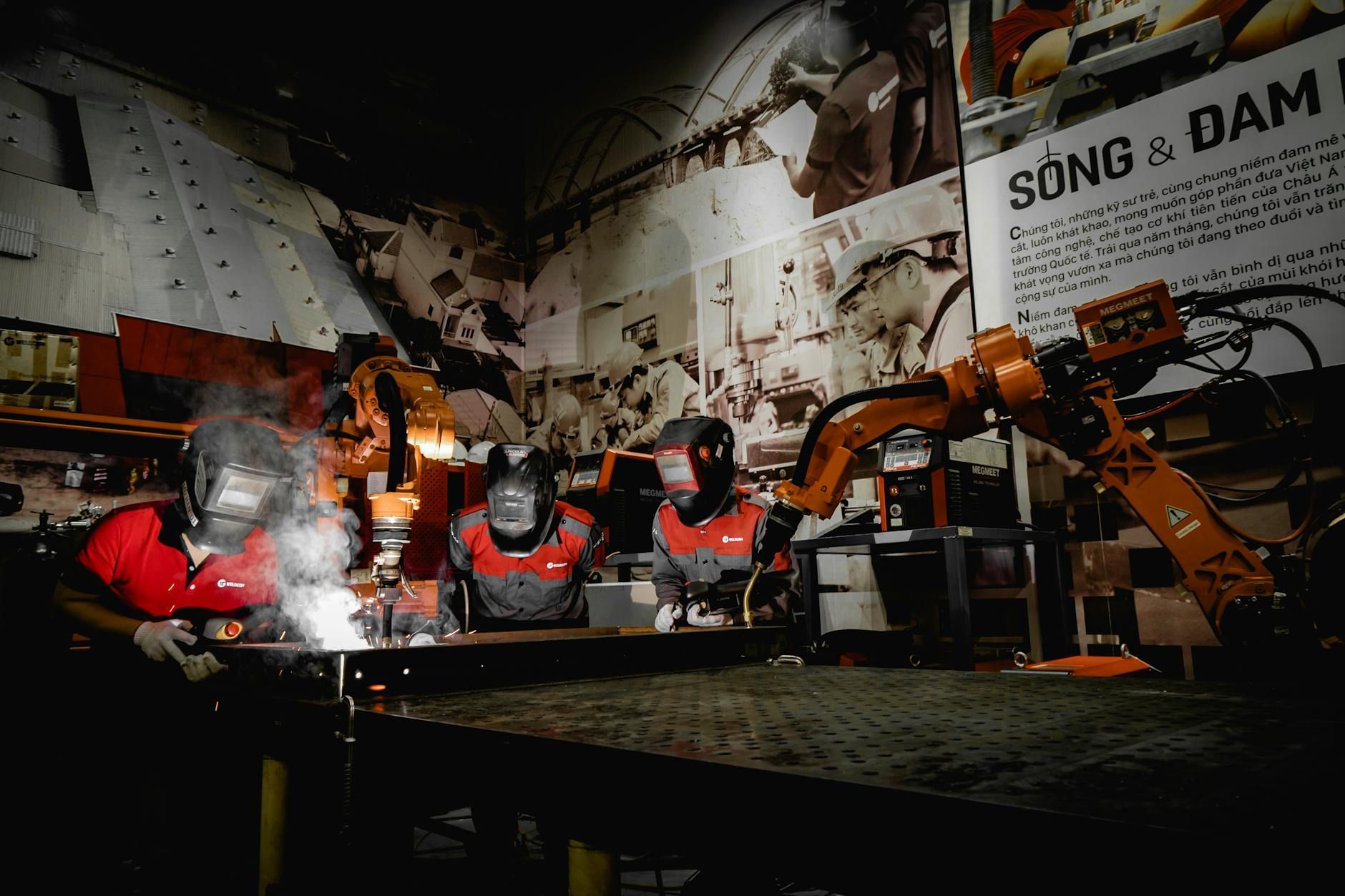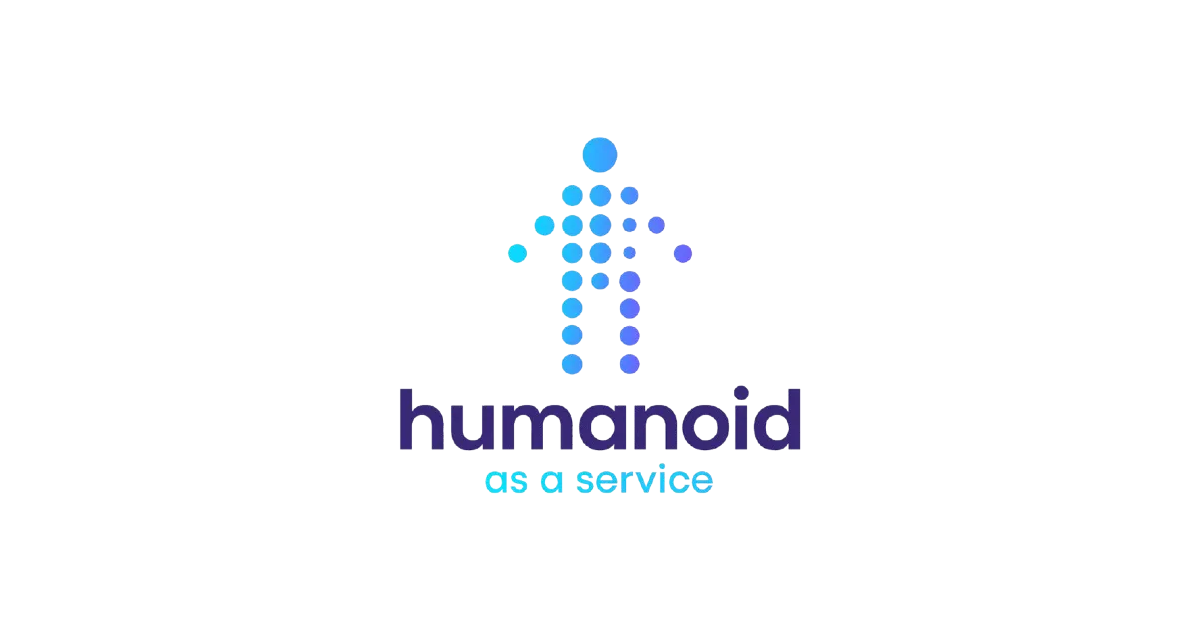Strong Wealth Solutions
Work Smarter, Not Harder: Workforce Automation Tools Explained
You’re an executive or business leader, always on the lookout for ways to run your organization more effectively. Let’s be honest, working longer hours isn’t always the best solution. That’s where workforce automation tools come in. They help you optimize processes, streamline tasks, and free up your team to focus on valuable, creative work instead of the daily grind.
In this guide, you’ll discover how advanced automation can transform your day-to-day operations. We’ll dive into common challenges, best practices, and the return on investment that comes from a well-planned rollout. Whether you’re curious about adopting robotic process automation or exploring AI-driven solutions, there’s an approach that can fit your exact needs. By the time you finish reading, you’ll be ready to confidently move forward, armed with practical tips for blending technology and strategy in your own company.
Let’s begin with the benefits. We’ll demystify workforce automation, show you how it can lighten mundane workloads, and set you on a path to working smarter, not harder.
Recognize the benefits
In a busy work environment, certain tasks can be downright exhausting. Manual data entry, endless emails, and repetitive chores slow productivity to a crawl. That’s where automation shines. By leveraging specialized tools, you free your workforce from tasks that drain valuable time. Instead of getting lost in routine activities, employees can focus on higher-level work, like strategy, innovation, and building customer relationships.
Boosting efficiency
When you automate repetitive steps, you open up space for creativity. Think about it: employees might spend hours each day on administrative tasks. With the right automation strategy, you cut those hours down to minutes. That means your team can hand off these tasks to technology, freeing them to brainstorm, collaborate, and refine the bigger picture. Over time, you’ll see tangible improvements in output because you’re reducing busywork and lowering the risk of burnout.
Reducing costs
Expenses are top of mind when you’re scaling or dealing with tight budgets. Automation might require an initial investment, but the long-term savings can more than compensate. Machines and software don’t make random typos or skip key steps, so you eliminate errors that lead to costly rework. Imagine a system that double-checks spreadsheets or flags any oddities. That alone can save you from pricey mistakes. Bottom line, you cut unnecessary spending and free funds for strategic investments.
Enhancing employee satisfaction
It’s easy to overlook the human element of automation. While some worry about machines stealing jobs, the reality can be positive if managed well. Letting technology handle mundane, repetitive tasks means people get to spend more time on challenging, engaging work. That sense of purpose and contribution often leads to better morale and higher retention rates. Additionally, automation can reduce the chance of burnout, as employees no longer feel swamped by trivial tasks. Over time, that synergy of motivated teams and efficient processes fuels ongoing success.
In short, automation doesn’t just increase productivity, it also fosters a healthier culture where employees can thrive. Next, you’ll discover the top scenarios where these innovations truly shine, from data-heavy processes to customer-facing tasks.
Identify top use cases
Before you adopt any kind of automation, it helps to pinpoint the tasks that will benefit most from a digital overhaul. Often, these are jobs that are repetitive, prone to error, or that soak up too much time. From running payroll to analyzing market research, the possibilities are surprisingly broad.
Across industries, from financial services to healthcare, these tasks may differ in the details, but they share a common theme: they’re time-intensive, susceptible to mistakes, and essential to daily operations. Healthcare providers, for instance, manage huge volumes of patient data. Automating records not only speeds up retrieval but also safeguards accuracy for better patient outcomes. Financial institutions often tap into automation to spot anomalies in high-volume transactions, curbing the risk of fraud. Such real-world examples show that automation has enormous appeal, no matter your sector.
Repetitive tasks
Routine responsibilities show up everywhere: entering customer details, scanning documents, or reconciling invoices. Every minute spent on these tasks is a minute not spent brainstorming or closing high-value deals. Tools for automating your workforce can handle these chores at rapid speed. Even if you automate only a slice of your daily processes, the cumulative effect is massive over the course of a year.
Data management
Data is the lifeblood of every modern organization, but manually sifting through spreadsheets is a slow and error-prone process. Automated data management removes this burden, gathering and verifying entries in the background. From capturing new leads to updating your inventory, these workflows function with minimal oversight. If you’re curious about advanced approaches, consider reading more about robotic process automation. Such solutions help you reduce labor-intensive tasks and maintain clean, accurate records at scale.
Customer support
While customer service relies on empathy and creativity, many inquiries involve the same basic questions: info about shipping, product availability, or account login issues. AI-powered chatbots handle these repetitive requests around the clock. Your clients get quicker answers, and your support agents save energy for complex or sensitive cases that truly require a human touch. The result is a blend of speed and personalization that keeps both your team and your customers happy.
Advanced analytics
Collecting data is one step, but gleaning insights is what really drives growth. Automation can help you detect patterns, forecast trends, and uncover new revenue opportunities. Picture an AI tool parsing massive data sets to predict product demand or identify emerging consumer behaviors. With crystal-clear analytics, you can plan marketing campaigns or refine your product line more effectively, cutting down on guesswork and focusing on solid, data-backed decisions.
By steering the right tasks toward automated systems, you liberate employee brainpower for innovation and strategy. Next, we’ll explore a few categories of automation making waves in the business world.
Explore key automation categories
You’ll find a broad range of technology that fits under the umbrella of workforce automation. It’s not just about software or hardware, but how you integrate these solutions into your day-to-day processes. Below are some core categories that often serve as a foundation for modern automation strategies.
Software automation
Software automation focuses on performing digital tasks with minimal human input. You might set up automated email campaigns to segment leads, or configure triggers that update your CRM system whenever fresh data arrives. The magic lies in the ability to handle large volumes of work quickly and consistently. Essentially, software automation is the behind-the-scenes conductor that keeps your digital operations running in harmony.
Physical robotics
While software addresses online tasks, physical robotics deals with manual labor, particularly in sectors like manufacturing and logistics. Industrial robots can assemble parts, stack products, or sort items without requiring coffee breaks. They often operate 24/7 if properly maintained. If your operation deals with a steady flow of physical goods, robotics might be your ticket to high-volume and high-speed workflows. Of course, your staff will need to learn how to supervise, maintain, and collaborate with these robotic systems.
Intelligent chatbots
We touched on chatbots already, but their role is big enough to warrant another mention. While basic chatbots rely on pre-scripted answers, advanced AI chatbots can learn from real interactions, identify user sentiment, and even recommend products. This not only frees your support team from repetitive questions but also provides a uniform experience for customers. A well-trained bot can juggle countless queries at once, drastically cutting wait times and boosting user satisfaction.
Cognitive automation
Cognitive systems push beyond repetitive tasks by employing machine learning to interpret, decide, and adapt. They can analyze complex data sets (like financial anomalies), spot inconsistencies, or predict machinery malfunctions based on real-time sensor data. Although setting up cognitive automation can be complex, it adds a layer of intelligence to your operations, making automation far more responsive and context-aware.
Cloud-based synergy
More and more companies are leveraging the cloud for flexible, scalable automation. Cloud-based platforms let you integrate new tools without overhauling your hardware, making it easier to collaborate across departments or even across time zones. Whether you’re sifting through real-time e-commerce metrics or refining supply-chain workflows, cloud-based solutions handle high data volumes with minimal hiccups. Another bonus is reduced maintenance overhead, so your IT staff can focus on areas that add strategic value.
Chances are you’ll blend multiple categories for the best results. Next, let’s look at how you can set yourself up for a smooth transition from manual procedures to automated excellence.
Adopt best practices
Bringing automation into your business can be exciting, but a thoughtful plan helps avoid confusion and wasted effort. Below are a few suggestions that can guide you toward launching automation in a sustainable, high-impact way.
Plan from the top
Any major shift, especially one involving technology, needs buy-in from leadership for it to gain traction across the organization. As an executive or manager, clarify the objectives at the outset, whether it’s cutting down invoice processing time or boosting your customer response rate. Communicating clear goals from the get-go aligns everyone around a common vision.
Communicate with your team
Introducing automation can trigger anxiety if employees fear job loss. Address these concerns directly. Let your staff know how automation frees them from tedious tasks and provides room for skill development. Encourage Q&A sessions, gather feedback, and keep them updated on the process. When employees feel informed and included, they become key allies in helping you transition successfully.
Pick the right technology
With so many platforms on the market, choosing a solution can feel overwhelming. Start by listing out must-haves in terms of compatibility, security, and ease of use. Then, schedule demos or trials to gauge each tool's performance. Remember, the highest price tag doesn’t guarantee the best fit, nor does a basic option necessarily meet your growing needs. Ideally, you want a system that scales with you, not one you’ll outgrow in a year or two.
Test and refine early
After selecting a tool, pilot it in a department or with a specific process first. Keep tabs on performance metrics, user feedback, and overall efficiency. If issues arise, it’s easier to make adjustments on a smaller scale than across the entire company. This controlled rollout might stretch your timeline a bit, but it dramatically lowers the risk of large-scale setbacks. With this approach, you can fine-tune your strategy and replicate successes as you expand automation elsewhere.
Following these best practices offers a road map for a smoother integration. Next up, we’ll tackle potential pitfalls you should keep an eye on, from workforce anxieties to the complexities of merging new systems with old ones.
Overcome potential challenges
Any significant shift faces its share of bumps in the road. While automation can revolutionize your workflow, it also brings obstacles you should plan for. Addressing these in a proactive manner helps you maintain trust, avoid downtime, and keep your long-term vision intact.
Workforce concerns
A common question is whether automation will replace human roles. The truth is that it often redistributes tasks rather than removing them entirely. Your employees might shift toward creative or analytical roles that complement automated systems. Boost this positive view by investing in training programs, so your staff can build new expertise. In doing so, you nurture an engaged, future-focused team that sees technology as an ally, not an adversary.
Integration with legacy systems
Many organizations already have older software or hardware in place. If this is the case for you, figuring out how to connect new automation tools with your existing ecosystem can be a major hurdle. You might need specialized connectors or custom coding to get everything talking seamlessly. While this can take time, it’s well worth it when your processes mesh together, strengthening efficiency across every department.
Security considerations
Adding new tools to your infrastructure also expands your attack surface. Cybercriminals often target companies that are in flux, hoping to exploit new vulnerabilities. Make sure your organization has strong security policies, including secure logins, encryption, and regular system audits. Train your staff to recognize phishing attempts and practice safe handling of sensitive data. When everyone is on board with security, you can automate confidently without increasing your risk profile.
Embracing a cultural shift
Sometimes the biggest hurdle is a cultural one, especially in companies accustomed to certain habits or traditional hierarchies. Some employees may be resistant to trusting AI-driven solutions or robotics. Here’s where you can spotlight small wins. Celebrate time savings, highlight positive feedback from clients, and showcase employees who thrive in the new environment. As those success stories spread, skepticism often melts away, opening the door to a workplace culture that welcomes continuous learning and data-driven thinking.
If you tackle these challenges head-on—through transparent communication, comprehensive training, and robust security measures—you’ll foster a sense of trust and collaboration. With that groundwork laid, it’s time to talk about evaluating your progress and making sure your automation projects deliver the results you expect.
Measure and optimize results
Automated systems offer tremendous potential, but how do you confirm they’re working at their peak? Tracking the right metrics and gathering ongoing feedback will help you refine your strategy. Here are some ways to measure your return on investment and identify what still needs tweaking.
Set clear KPIs
Key Performance Indicators (KPIs) serve as your compass, pointing you toward or away from success. Examples include how much you’ve cut response times, how many manual tasks you’ve eliminated, or how much money you’ve saved by reducing errors. Defining these metrics early on helps you spot red flags quickly and, more importantly, signals to your team that you’re serious about the direction of the project.
Track ROI over time
Return on investment goes beyond pure revenue gains. You also need to consider improved employee satisfaction, customer loyalty, and brand perception. Quantifying this can be tricky. Start by calculating direct savings from reduced labor hours, fewer mistakes, and faster cycle times. Then factor in indirect perks, such as higher employee retention or improved service ratings. Over the long run, these intangible benefits can become major assets.
Continuous improvement loops
Just because you’ve automated some tasks doesn’t mean you can rest on your laurels. A willingness to iterate sets the best companies apart. Conduct regular audits: Are certain tasks still taking longer than expected? Have new updates or tools come out that could further streamline processes? By making updates and refining your systems periodically, you’ll ensure your automation remains sharp and relevant as your business evolves.
Collect feedback from stakeholders
Data offers only one dimension of insight; the human perspective is equally important. Host brief surveys or roundtable discussions to learn how automation shapes employee morale and customer satisfaction. Are response times improving? Do workers find the new systems easy to navigate, or are they confused about certain features? These insights can clarify small adjustments that make a big difference overall. In other words, look to combine the numbers you track with real voices and experiences.
When you pair quantifiable KPIs with qualitative feedback, you can pinpoint exactly where to adjust—and where to double down. Next, let’s shift our focus to the long-term horizon, exploring how to future-proof your workforce by integrating new technologies and fostering continuing education.
Plan your future workforce
Automation shouldn’t be treated like a short-term event. Think of it as a gateway to future-proofing your entire organization. As technology advances, so should your team. By planning ahead, you’ll keep pace with market changes and stay ahead of the competition.
Upskilling employees
People adapt more willingly to change when they see personal growth ahead. Whether it’s training in data analytics, project management, or AI software, upskilling has a double impact: it boosts employee engagement and ensures your business has in-house expertise to guide new tech rollouts. Consider accredited online courses, in-person workshops, or mentorship programs within your organization. As your employees learn advanced skills, they become stronger contributors to your evolving automation ecosystem.
Collaborating with humanoid solutions
Humanoid as a Service (HaaS) combines the best of human creativity with the precision of advanced robotics and AI. These humanoid robots can help you gather real-time operational data, assist with repetitive manual tasks, and even interact directly with customers in certain scenarios. By pairing your workforce with AI-driven machines, you amplify capacity without overworking human staff. You can start small, maybe with a pilot project in a single department. Once you see tangible gains—like improved response times and happier employees—you’ll be ready to scale up with confidence.
Preparing for tomorrow’s technology
One thing is certain: automation continues to evolve. AI and machine learning are becoming more sophisticated, and even fields like quantum computing may play a role in how you process data in the near future. Keeping an eye on these emergent trends can position your organization to pivot quickly when next-level tools become commercially viable. Encourage curiosity, experimentation, and ongoing learning across your workforce. This proactive approach makes you less likely to be caught off guard by technological leaps and more likely to capitalize on them.
Whether your vision of the future involves fully automated warehousing, AI-driven customer service, or a flexible hybrid of human and networked intelligence, staying adaptive is your greatest asset. With that in mind, let’s wrap up with some final considerations and a clear next step.
Conclusion
You’ve explored the ways automation can supercharge efficiency, reduce costs, and keep your employees engaged by freeing them from mundane tasks. Along the way, you learned to spot prime use cases, choose the best tools for your needs, and measure your gains to ensure the strategy remains on target. Put simply, you now have a roadmap for building a working environment that’s faster, smarter, and more fulfilling for everyone involved.
If you’re ready to make the leap, why not explore how Humanoid as a Service (HaaS) might support your organization? HaaS solutions can fill any gaps in your current setup, allowing employees to focus on creative, high-impact activities. By partnering with a credible provider, you’ll integrate the latest robotics and AI deeply and seamlessly into your processes.
Get started here: https://www.humanoidasaservice.com/get-started. Whether you’re looking to book a free consultation or jump right into the planning phase, now is the time to strengthen your team with the power of automation. Move forward confidently, knowing you’re creating a space where people are utilized for higher-level thinking and meaningful work, while technology takes care of the rest.
SHARE THIS POST:
Leave A Comments:
Our Recent Posts:
Transform Your Workforce
Experience the future of work today. Book a pilot project or demo to see how humanoid automation can elevate your operations.








